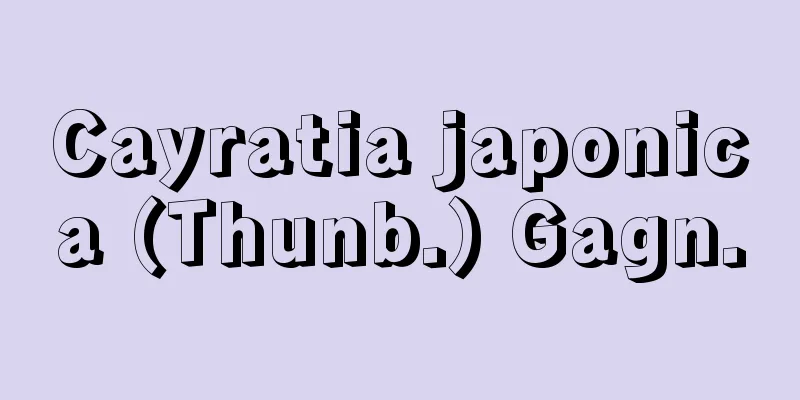Chiyo Uno

|
Novelist. Born on November 28, 1897 in Iwakuni Town, Yamaguchi Prefecture. Graduated from Iwakuni Girls' High School. Her debut novel, "The Face of Powdered Fat" (1921), won a novelist's prize in the Jiji Shimpo newspaper. She moved to Tokyo from Sapporo, where she met and lived with Ozaki Shiro. She became acquainted with Miyoshi Tatsuji, Kajii Motojiro, Kawabata Yasunari, and Hagiwara Sakutaro. In 1930 (Showa 5), she met Togo Seiji while researching for a novel, and they lived together. She wrote her early masterpiece, "Confession of Love" (1933-35). It is a fresh and adventurous love story told by the Western-style painter Yuasa Joji, who had recently returned to Japan. After parting ways with Togo, she published "Even Parting is Fun" (1935) and "Regret" (1936). In 1936, she founded Stylesha. After meeting Kitahara Takeo, she was influenced by French psychological novels such as The Lady of Cleves. In 1938, she launched Buntai, and married Kitahara the following year. During World War II, she published Tengu Yakuyoshi the Dollmaker (1942) in Chuokoron. The account of her visit to Tokushima to make Joruri puppeteers, Hisayoshi, marked a new stage in her storytelling art. After the war, she revived Buntai (1947), serializing Ohan until it ceased publication with the fourth issue (1949). Ten years later, this work was completed in Chuokoron (1950-57). Her novel Stab (1963-66) is a first-person confessional novel about the collapse of her business and love at the time, and is well-known for its tranquil moralist style of narration. She divorced Kitahara in 1964. She continued to be active, producing autobiographical works such as "The Sound of the Wind" (1969), "Happiness" (1970), and "The Story of a Certain Woman" (1982), as well as the memoir "I Live" (1982-83). [Tanaka Miyoko] "The Complete Works of Chiyo Uno, 12 volumes (1977-78, Chuokoron-Shinsha)" [Reference] |Source: Shogakukan Encyclopedia Nipponica About Encyclopedia Nipponica Information | Legend |
|
小説家。明治30年11月28日、山口県岩国町生まれ。旧制岩国高等女学校卒業。処女作『脂粉(しふん)の顔』(1921)が『時事新報』の懸賞小説に当選、札幌より上京し、尾崎士郎を知り同棲(どうせい)。三好(みよし)達治、梶井(かじい)基次郎、川端康成(かわばたやすなり)、萩原朔太郎(はぎわらさくたろう)らを知る。1930年(昭和5)に小説取材のため東郷青児に会い同棲し、初期の代表作『色ざんげ』(1933~35)を書く。新帰朝の洋画家湯浅譲二の語りで運ばれるみずみずしい恋愛冒険小説。東郷と別れ、『別れも愉(たの)し』(1935)、『未練』(1936)を発表。36年スタイル社を創立。北原武夫(たけお)を知り『クレーブの奥方』などフランス心理小説の影響を受ける。38年には『文体』を創刊、翌年北原と結婚した。第二次世界大戦中は『中央公論』に『人形師天狗(てんぐ)屋久吉』(1942)を発表。徳島に浄瑠璃(じょうるり)人形の職人久吉を訪ねたその聞き書きで、語り芸の一段階を画するものとなった。戦後『文体』を復刊(1947)、4号で終刊(1949)するまで『おはん』を連載、この作品は10年後『中央公論』で完結(1950~57)した。また『刺す』(1963~66)は、この当時の事業と愛の破綻(はたん)をつづった一人称告白体の小説であり、モラリストを思わせる静謐(せいひつ)な語り口は定評がある。64年北原と離婚。『風の音』(1969)、『幸福』(1970)、『或る一人の女の話』(1982)などの自伝的作品、回想記『生きて行く私』(1982~83)など盛んな活動を続けた。 [田中美代子] 『『宇野千代全集』全12巻(1977~78・中央公論社)』 [参照項目] |出典 小学館 日本大百科全書(ニッポニカ)日本大百科全書(ニッポニカ)について 情報 | 凡例 |
Recommend
LAMPS - LAMPS
…Helicopters are relatively inexpensive to develo...
Wu Yue - Goetsu
The states of Wu and Yue in the Spring and Autumn ...
cable railway
...Some were built underground (Glasgow). In Engl...
stratopause
…The temperature in the lower part of the stratos...
Snyders, Frans
Born: November 11, 1579. Baptized: Antwerp Died Au...
Jerónimo de Mendieta
1525‐1604 A Spanish Franciscan monk who traveled t...
Halffter, C.
...This flourishing period, called the "New ...
Electrofused refractory
Refractories are made by melting refractory raw ma...
Arnhem Land
The name of the region in the northern part of Aus...
Rebellion of the Witches - Fukonoran
Civil war occurred at the end of the reign of Emp...
Ajikan - Ajikan
It is one of the meditation methods of Shingon Es...
Deutsch, KW (English spelling) DeutschKW
…With the development of behavioral science after...
Cujacius, J.
…one of the representatives of French humanist la...
Barker, R.
...The panopticon, a surveillance system invented...
Super-multiple time theory
This is a mathematically formalized theory that m...









